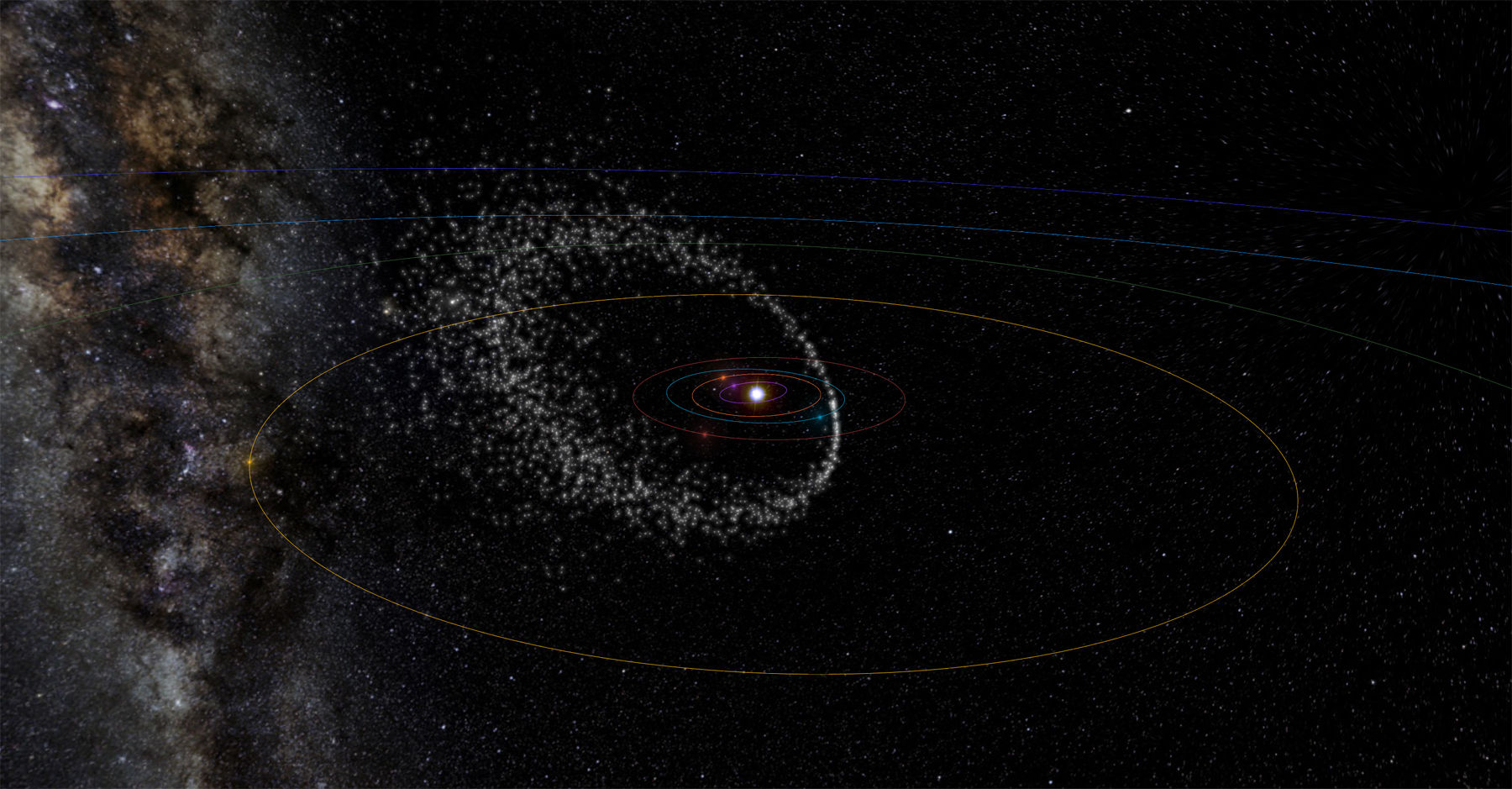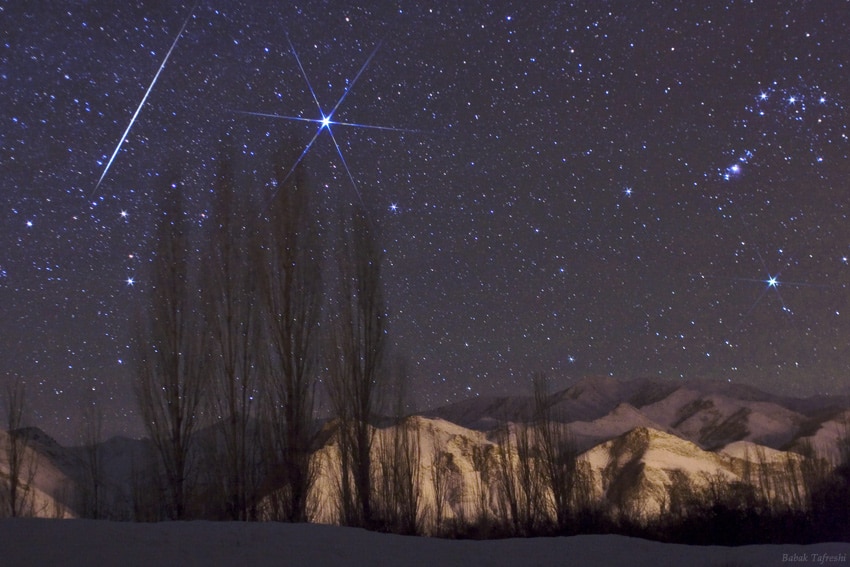Create a free profile to get unlimited access to exclusive videos, sweepstakes, and more!
Fireworks for the New Year: The Quadrantid meteor shower peaks tomorrow!

The new year is starting off with a bang, astronomically speaking: The Quadrantid meteor shower will peak tomorrow night (03/04 January, Friday night/Saturday morning)! It’s the first meteor shower of the calendar year, an oft-forgotten one, and it’s predicted to be pretty good this year.
Unlike most showers, which take a few days to strengthen, the Quadrantids peak very rapidly, in just a few hours. So tonight you won’t see many meteors at all, but tomorrow night that could be different. Under ideal conditions this one can reach well over 100 meteors per hour — however, to be fair, those conditions are pretty rare. Most likely you’ll see about half that, but that’s still roughly one per minute. The good news is that the Moon will be first quarter and sets around midnight, so its bright light won’t interfere with the shower.
The peak this year is predicted to occur at 08:00 UTC 04 January — so Friday night/Saturday morning at 03:00 Eastern (US) time. If you’re serious about watching you should be out at least an hour before then, in case the prediction is off a bit. That’s a good idea anyway, since that’ll give your eyes time to adjust to the darkness; the meteors tend to be fainter than in other showers.
So how do you watch this shower? I have a meteor-shower-watching article I wrote with a ton of advice; it’s for the Geminids but the general suggestions still hold. All you need are a good wide view of a dark sky, a comfortable place to lie down (a beach or lawn chair works well, especially if it reclines flat), and patience. It may take a few minutes or more to see your first meteor, but if you stick it out for a couple of hours you’ll hopefully see a few dozen. Unfortunately, though, I can’t guarantee that! Meteor showers are fickle, so your kilometerage may vary.
The timing of the shower favors North America, but the geometry favors the northern hemisphere in general. If you live south of the equator it’s unlikely you’ll see any shooting stars, and if you’re farther than 50° south you won’t see it at all. That’s because the meteors appear to come from a single point in the sky, located in the constellation of Bootes, which is in the far northern sky. That point is called the radiant, and it’s due to perspective. As the Earth moves through the meteoroid stream, it’s a bit like driving through a tunnel, where the lights on the sides of the wall all seem to come from the point directly ahead of you. It helps if the radiant is high in the sky, but it’s not critical.
The science of this particular shower is pretty cool, for a number of reasons. Meteor showers, in general, occur when the Earth plows through the stream of debris left behind by a comet. When the comet warms as it approaches the Sun its ice turns to gas, dislodging the dust and pebbles in it. These then orbit the Sun on their own in very similar orbits. If they cross the Earth, the debris burns up in our atmosphere and we get a meteor shower.
Only two showers defy this explanation: The Geminids in December and the Quadrantids in early January. They don’t come from comets, they come from asteroids. The parent body of the Quadrantids is thought to be a smallish asteroid called 2003 EH1. It was only discovered in 2003, but its orbit is very similar to that of the meteoroids. The research paper talking about this is fascinating: It looks like the asteroid had a disruptive event about 500 years ago, probably due to a collision with a decent sized but still smaller asteroid. The debris ejected from that event may be what we’re seeing as the Quadrantids.
The orbit doesn’t get particularly close to the Sun, but it does go near Jupiter, and that giant planet’s giant gravity warps the paths of the asteroid and meteoroids. They don’t exactly match now, but they’re still pretty close. This interactive graphic shows that really well:
Cool, huh? I love this graphic. You can see it full-screen here. Click and drag to change the viewing angle, and use the mouse scroll to zoom in and out. You can right-click-and-drag to move the center, and if you do that carefully you can see how close the orbit gets to Jupiter (the orange orbital track; Earth is the blue one, third from the Sun). The individual dots are meant to be representative of the meteoroids, and not their actual locations.
This also shows you that the orbit of these little guys is nearly perpendicular to the Earth’s orbit (which is why the peak so rapidly, in just a few hours; we cross their path quickly). You can also really see how their orbit intersects ours, which is why we can see them in the first place! It also shows why this shower favors the northern hemisphere; the meteors are raining down on us from the north.
So if you get a chance Friday night, go take a look! Dress warmly. But if conditions aren’t great, don’t despair: The Perseids in August and Geminids in December are predicted to be pretty great this year as well. There are also lots of other meteor showers during the year you can look for, too.
And if you have dark skies in general, then just pick a moonless night and go outside, preferably after midnight. You’ll probably see a few random meteors per hour anyway. It’s a little added perq to doing what I tell people to do all the time: If you’re able, go outside and look up. There’s a lot of Universe out there to see.



























